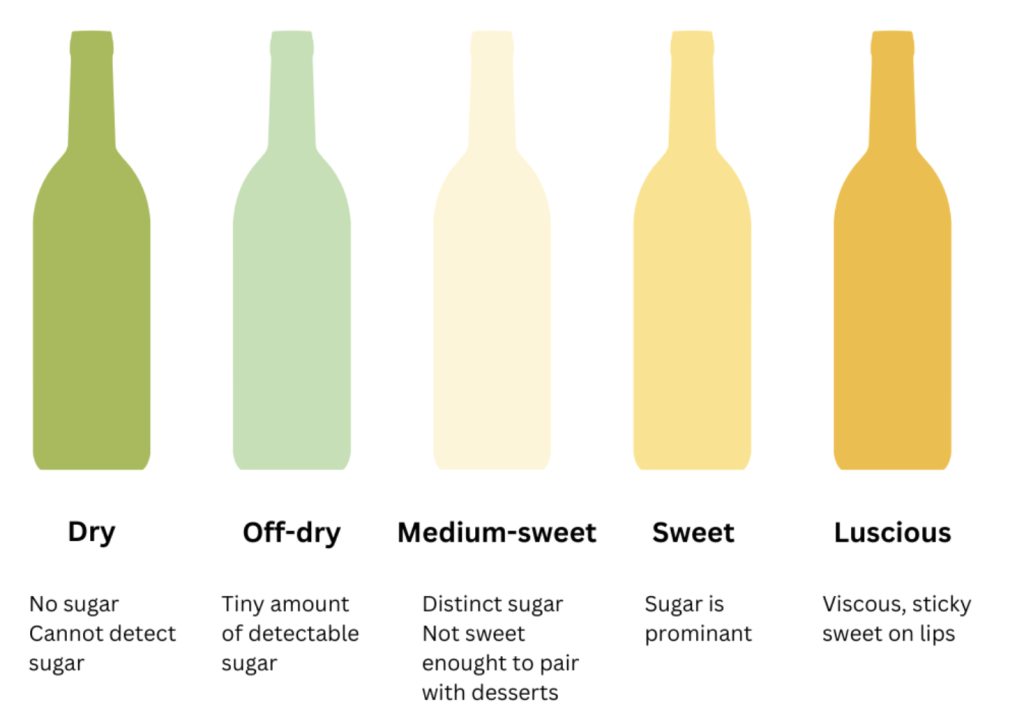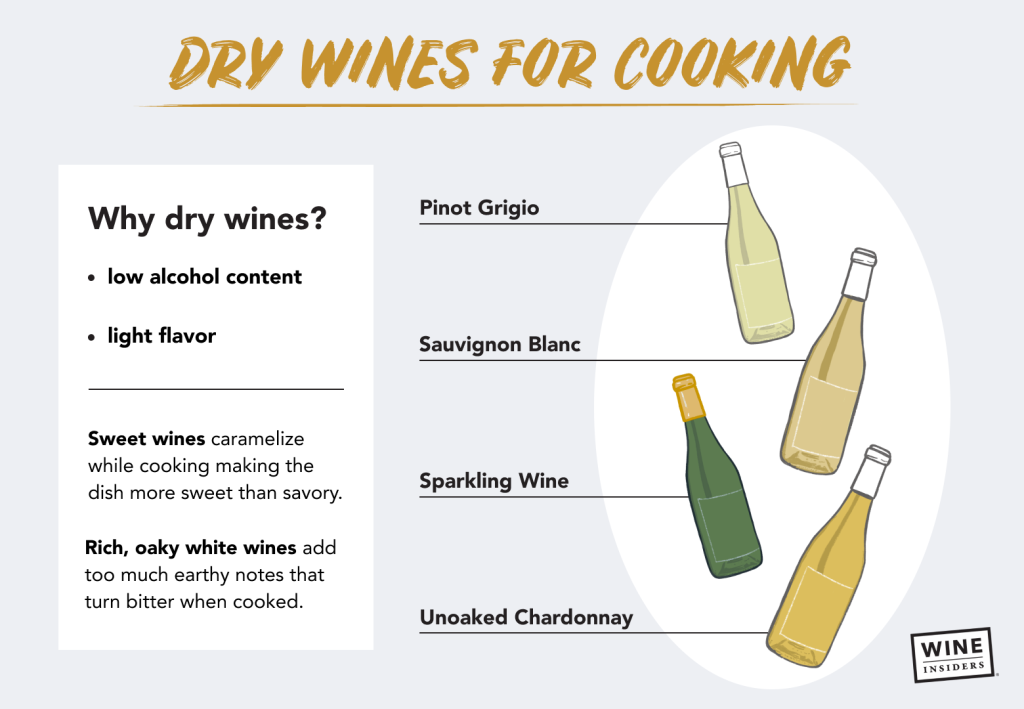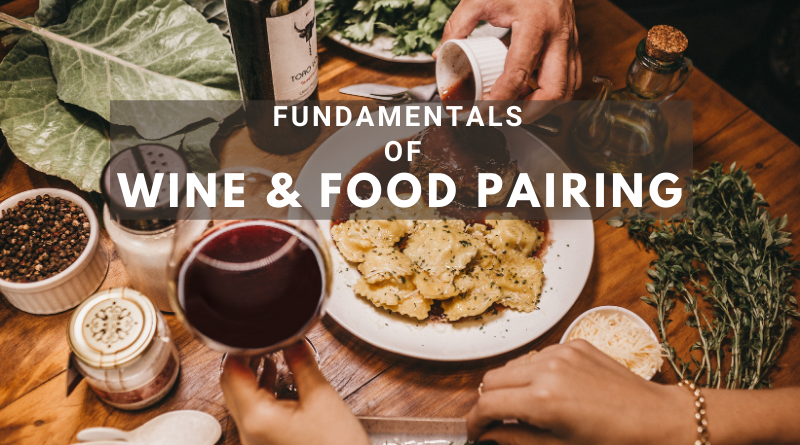Dry White Wine With Best Cooking Options
What is a Dry White Wine
Dry white wine is a type of wine that is fermented without the presence of residual sugar, resulting in a crisp and refreshing taste. It is typically made from white grape varieties, although some may also be made from red or black grapes.
Dry white wine has become increasingly popular in recent years, both as a standalone beverage and as a pairing for a wide variety of dishes. It is often favored for its light and refreshing taste, as well as its versatility with food.
In this article, we will explore the characteristics of dry white wines, including its taste and aroma, the types of grapes used to produce it, and the most popular varieties available. We will also discuss how to choose and serve dry white wines, as well as its potential health benefits. By the end of this article, readers will have a better understanding of this popular and delicious beverage, and be able to choose and enjoy a good bottle of dry white wine with confidence.
Characteristics of Dry White Wine
Dry white wine has a distinct taste and aroma that sets it apart from other types of wine. Here are some of the key characteristics of dry white wine:
Taste and Aroma
Dry white wine is typically described as having a crisp, clean, and refreshing taste. It is characterized by its high acidity, which gives it a tangy and zesty flavor. The flavor profile of dry white wines can vary depending on the grape variety used, as well as the region where it is produced.
Some common taste notes found in dry white wine include citrus fruits, such as lemon and lime, as well as green apple, pear, and melon. It may also have subtle floral or herbal notes, such as honeysuckle or chamomile.
In terms of aroma, dry white wine is often described as having a light and delicate scent. It may have hints of fruit or flowers, as well as subtle mineral or earthy undertones.
Difference between Dry, Off-Dry, and Sweet White Wines

It is important to note that not all white wines are dry. In fact, there are several different levels of sweetness in white wine, ranging from bone-dry to very sweet. The sweetness of white wine is determined by the amount of residual sugar left after fermentation.
Dry white wine has no residual sugar, meaning that it is not sweet at all. It is the most acidic and refreshing type of white wine, and is often paired with lighter foods such as seafood or salads.
Off-dry white wine, on the other hand, has a small amount of residual sugar left after fermentation. It is slightly sweet, but still has a crisp and refreshing taste. Off-dry white wine is often paired with spicy or savory dishes.
Sweet white wine has a higher level of residual sugar, giving it a more pronounced sweetness. It is often paired with desserts or enjoyed as a dessert on its own.
Types of Grapes Used to Produce Dry White Wine
There are many different types of grapes used to produce dry white wine, each with its own unique flavor profile. Some of the most common white grape varieties used in dry white wine production include:
- Chardonnay: A versatile grape that produces a range of different styles of dry white wine, from light and crisp to full-bodied and oaky.
- Sauvignon Blanc: A crisp and refreshing grape variety that is often described as having grassy or herbaceous notes.
- Pinot Grigio/Pinot Gris: A light and refreshing grape variety that is often associated with Italian wines.
- Riesling: A versatile grape that can produce dry or sweet wines, with flavors ranging from fruity to floral to mineral.
Other white grape varieties used in dry white wines production include Chenin Blanc, Viognier, Albariño, and Vermentino, among others. The choice of grape variety can have a significant impact on the flavor and aroma of the resulting wine, making it an important consideration for winemakers and wine enthusiasts alike.
How to Choose and Serve Dry White Wine:
Choosing and serving a good bottle of dry white wine can seem daunting, but with a little knowledge and guidance, it can be a fun and enjoyable experience. Here are some tips for selecting and serving dry white wine:
Selecting a Good Bottle:
Read the label
Look for information about the grape variety, the region where the wine was produced, and the vintage year. This information can give you a good idea of the flavor profile and quality of the wine.
Consider the region
Different regions have different wine-making traditions and grape varieties, which can affect the flavor and quality of the wine. Some regions are known for producing particularly good dry white wines, such as the Loire Valley in France for Sauvignon Blanc or Marlborough in New Zealand for Pinot Gris.
Ask for recommendations
Don’t be afraid to ask for recommendations from a sommelier or wine expert. They can offer valuable insight into the flavor profile and quality of the wine, as well as provide suggestions for food pairings.
Serving Dry White Wine:
Temperature
Dry white wine should be served chilled, but not too cold. The ideal serving temperature varies depending on the variety of wine, but generally falls between 45-55°F (7-13°C). Over-chilling can mask the flavor and aroma of the wine, while serving it too warm can make it taste flat.
Glassware
Use a tulip-shaped glass or a white wine glass to serve dry white wine. The shape of the glass allows the wine to aerate and release its aromas, while the stem allows you to hold the glass without warming the wine with your hands.
Pouring
Fill the glass about one-third full, to allow for swirling and releasing the wine’s aromas. Hold the glass by the stem or base to avoid warming the wine with your hands.
Common Mistakes to Avoid:
Over-chilling the wine
As mentioned, over-chilling dry white wine can mask its flavor and aroma. Avoid putting the bottle in the freezer or over-icing it.
Serving the wrong variety
Make sure to choose a dry white wine that complements the dish you’re serving it with. For example, a full-bodied Chardonnay may overpower delicate seafood dishes, while a crisp Sauvignon Blanc can pair well with light salads or grilled vegetables.
Serving stale or oxidized wine
Dry white wine is best consumed young and fresh. Avoid serving wine that has been open for too long or has been exposed to air, as this can cause it to taste stale or oxidized.
By following these tips, you can choose and serve a good bottle of dry white wine that complements your meal and enhances your dining experience.
How To Pick A Dry White Wine For Cooking
Choosing the right dry white wine for cooking can make a significant difference in the flavor of your dish. Here are some tips for picking the perfect dry white wine for your next cooking project:

Consider the recipe
The first thing to consider when choosing a dry white wine for cooking is the recipe you’ll be using. Different recipes call for different types of wine, and some recipes may not call for wine at all. For example, a recipe that calls for a creamy sauce may require a dry white wine with a higher level of acidity, such as a Sauvignon Blanc or Pinot Grigio.
Choose a wine with a flavor profile that complements the dish
The flavor of the wine should complement the flavors in the dish. For example, if you are making a seafood dish, a dry white wine with a light, crisp flavor such as a Chardonnay or a Sauvignon Blanc may work well.
Avoid using expensive wines
When cooking with wine, it’s not necessary to use expensive wines. In fact, many chefs recommend using cheaper wines specifically for cooking. You don’t need to spend a lot of money on a bottle of wine that will be cooked down in a sauce.
Look for a wine with a moderate level of acidity
A moderate level of acidity is ideal for cooking because it helps to cut through the richness of the dish. Wines with a higher level of acidity, such as Sauvignon Blanc or Pinot Grigio, are excellent choices for cooking.
Taste the wine before using it
Before using a dry white wine for cooking, taste it to make sure you like the flavor. If you don’t enjoy drinking the wine, you may not enjoy it in your dish.
Store wine properly
Proper storage of the wine is essential to maintain its quality. Always store wine in a cool and dark place, away from direct sunlight and heat. An opened bottle of wine can be stored in the refrigerator for up to three days.
Best Dry White Wine for Cooking
When it comes to choosing the best dry white wine for cooking, it’s important to consider the flavors and acidity levels that will complement your dish. Here are some popular choices that are often recommended by chefs:
Sauvignon Blanc
Sauvignon Blanc is a popular dry white wine that is known for its high acidity and crisp, fruity flavors. It is a great choice for cooking seafood dishes, as it pairs well with delicate flavors like shrimp, scallops, and white fish. It also works well in creamy sauces and vinaigrettes.
Pinot Grigio
Pinot Grigio is another popular dry white wine that is often used in cooking. It has a light, crisp flavor with a moderate level of acidity, making it a good choice for cream sauces and light, summery dishes like salads and grilled vegetables.
Chardonnay
Chardonnay is a full-bodied dry white wine that has a buttery, oaky flavor. It is a good choice for cream-based sauces, risotto, and dishes with a rich, hearty flavor like roasted chicken or pork.
Vermentino
Vermentino is a dry white wine that is known for its crisp, citrusy flavor and high acidity. It pairs well with seafood, light pasta dishes, and summer salads.
Albariño
Albariño is a dry white wine that is known for its bright, crisp flavor and high acidity. It is a great choice for seafood dishes, as well as spicy or bold-flavored dishes like curry or Thai stir-fry.
Pinot Blanc
Pinot Blanc is a dry white wine that has a light, fruity flavor and a moderate level of acidity. It is a good choice for light cream sauces, seafood dishes, and salads.
Health Benefits of Dry White Wine
Dry white wine, when consumed in moderation, may offer several potential health benefits. Here are some of the health benefits associated with drinking dry white wine:
Reduced risk of heart disease
Studies have suggested that moderate consumption of dry white wine may reduce the risk of heart disease. The antioxidants and polyphenols found in wine can help improve cardiovascular health by reducing inflammation and increasing levels of “good” cholesterol.
Lowered risk of cancer
Dry white wine may also help reduce the risk of certain types of cancer, such as breast and colon cancer. This is thought to be due to the presence of antioxidants in the wine that help protect cells from damage and prevent the formation of cancerous cells.
Improved cognitive function
The antioxidants and polyphenols in dry white wine may also help improve cognitive function and reduce the risk of cognitive decline associated with aging.
These health benefits are attributed to the presence of antioxidants and polyphenols in dry white wine. These compounds can help protect the body against oxidative stress, inflammation, and other harmful processes that can contribute to disease.
However, it is important to note that these potential health benefits are only associated with moderate consumption of dry white wine. Drinking excessive amounts of alcohol can increase the risk of health problems such as liver disease, high blood pressure, and stroke.
Moderate consumption of dry white wine is generally defined as one to two glasses per day for men and one glass per day for women. It is also important to note that the health benefits associated with dry white wine can be obtained through other sources such as fruits, vegetables, and tea.
Final Words
In conclusion, dry white wine is a versatile and enjoyable beverage that can elevate any meal. Whether you are cooking with it or simply sipping it alongside a delicious meal, dry white wine offers a range of flavors and aromas that are sure to delight the senses. From the crisp acidity of Sauvignon Blanc to the buttery richness of Chardonnay, there are many different varieties to choose from.
We encourage readers to explore the world of dry white wine and experiment with different food pairings. Don’t be afraid to try new things and discover your own favorite combinations. Whether you are enjoying a glass of wine with friends or cooking up a storm in the kitchen, dry white wine is the perfect accompaniment. So go ahead and raise a glass to the wonderful world of dry white wine!




